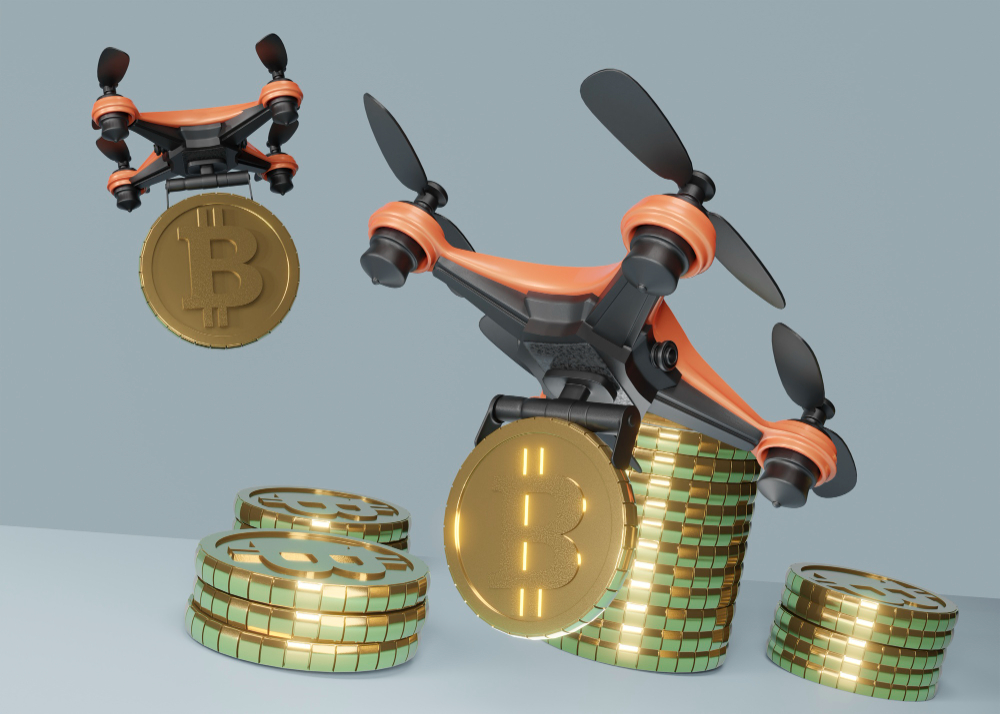Decentralized Finance, more commonly referred to as DeFi, is a revolutionary concept in the world of blockchain and cryptocurrencies. Unlike traditional finance that depends on centralized authorities like banks or governments, DeFi operates on public blockchains, primarily Ethereum. By eliminating intermediaries, DeFi allows individuals to engage in financial activities such as lending, borrowing, trading, and earning interest directly from their crypto wallets.
The appeal of Decentralized Finance lies in its transparency, accessibility, and inclusivity. Anyone with an internet connection can access DeFi platforms without the need for identification documents, credit checks, or even a bank account. This disruption of conventional financial systems has led to a rapid rise in DeFi users, especially in regions with underdeveloped banking infrastructure.
In this guide, we’ll explore everything you need to know about DeFi—from how it works to how you can earn passive income by lending your crypto assets. If you’re new to this concept or looking to optimize your investment strategies, this post is your ultimate roadmap.
How DeFi Differs From Traditional Finance
One of the most striking differences between traditional finance and Decentralized Finance is how they manage data and transactions. In traditional banking systems, every transaction is recorded and validated by centralized institutions. In contrast, DeFi systems rely on blockchain technology and smart contracts to ensure trust, security, and immutability.
Smart contracts are self-executing programs that run on blockchain networks. They automate agreements between parties without the need for middlemen. This means that when you lend money through a DeFi protocol, you’re interacting with a coded contract, not a bank officer.
Additionally, traditional finance often imposes high fees, long wait times, and geographical restrictions. DeFi removes these limitations, providing a faster and more cost-effective financial experience. It allows users from anywhere in the world to take control of their financial destiny.
Core Components of the DeFi Ecosystem
The Decentralized Finance ecosystem is composed of multiple building blocks that work together seamlessly. The primary components include decentralized exchanges (DEXs), lending protocols, stablecoins, and yield farming platforms.
Decentralized exchanges such as Uniswap or SushiSwap allow users to trade cryptocurrencies directly without relying on centralized brokers. These DEXs use liquidity pools funded by users who earn a portion of the trading fees in return. This model promotes user empowerment and profitability.
Lending protocols like Aave and Compound are another cornerstone of DeFi. These platforms let users lend their crypto and earn interest or borrow assets against collateral. Stablecoins like USDC, DAI, or Tether serve as non-volatile currencies within DeFi networks, making transactions more predictable and less risky.
How to Start Using Decentralized Finance Applications
To begin your journey in Decentralized Finance, the first thing you need is a digital wallet. MetaMask, Trust Wallet, and Coinbase Wallet are some of the most popular options that support DeFi applications. After setting up your wallet, you’ll need to purchase cryptocurrency such as Ethereum (ETH), which is commonly used to pay for transaction fees on DeFi platforms.
Next, connect your wallet to a DeFi platform of your choice. Most DeFi dApps (decentralized applications) have user-friendly interfaces that guide you through processes such as lending, staking, or swapping assets. Always ensure you’re using the official URLs to avoid phishing scams or fraudulent clones.
Before committing funds, take time to understand the risks, fees, and protocols associated with the platform. Look for audit reports and community reviews to verify the security and credibility of the application.
Earning Passive Income through DeFi Lending
One of the most popular use cases in Decentralized Finance is earning passive income by lending crypto assets. By supplying your tokens to a lending protocol, you enable others to borrow them in exchange for interest. The interest rates are dynamic and influenced by supply and demand.
Protocols like Compound, Aave, and Yearn Finance allow users to deposit various tokens and earn Annual Percentage Yields (APY) that often outperform traditional savings accounts. In some cases, platforms reward users with governance tokens, adding another layer of profitability.
However, it’s essential to keep in mind that crypto lending carries its own set of risks—such as smart contract bugs, platform insolvency, or sudden market crashes. Using well-audited platforms and diversifying your portfolio can mitigate some of these risks.
Borrowing Crypto in the DeFi World
Borrowing through Decentralized Finance is also an accessible and efficient process. Unlike banks, DeFi platforms don’t require credit scores or detailed income histories. Instead, users provide crypto assets as collateral, which can be significantly higher than the borrowed amount to manage risks.
Let’s say you deposit $1,000 worth of Ethereum and want to borrow $500 worth of stablecoins. The platform will allow you to do this while keeping your ETH locked as security. If your collateral’s value drops too much due to market volatility, you may face liquidation.
This collateralized model ensures that lenders are protected, but it also requires borrowers to actively manage their loans. Tools like health scores and liquidation alerts are often provided to help users stay informed.
The Role of Stablecoins in DeFi

Stablecoins are essential to the stability and usability of Decentralized Finance systems. Unlike volatile cryptocurrencies such as Bitcoin or Ethereum, stablecoins are pegged to fiat currencies like the US Dollar, Euro, or even gold.
Stablecoins like USDT, USDC, and DAI are commonly used in DeFi for lending, borrowing, trading, and providing liquidity. They allow users to avoid the wild price swings associated with crypto markets while still benefiting from blockchain-based financial services.
Additionally, stablecoins act as a bridge between traditional and decentralized economies. They enable smoother on-ramps for new users and facilitate risk management strategies for experienced investors.
Yield Farming and Liquidity Mining: Boosting Your Crypto Gains
Yield farming and liquidity mining are advanced ways to maximize returns in Decentralized Finance. These strategies involve locking your crypto in liquidity pools or staking it in protocols to earn rewards, often in the form of native governance tokens.
For instance, by providing liquidity to a DEX, you not only earn a share of transaction fees but may also receive additional incentives. Projects often use these mechanisms to attract users and build capital, leading to lucrative—but volatile—earning opportunities.
While yield farming can be highly profitable, it also requires more technical knowledge and risk tolerance. Impermanent loss, platform hacks, and unstable tokens are common challenges. Beginners should start small and gradually explore more complex strategies.
Risks and Challenges in Decentralized Finance
Although Decentralized Finance offers immense potential, it is not without its pitfalls. Smart contract vulnerabilities can lead to devastating losses, especially if platforms are not thoroughly audited. Even well-established protocols have experienced exploits due to overlooked bugs.
Another significant risk is market volatility. Crypto prices can swing dramatically, affecting collateralized loans, liquidity pools, and overall platform stability. Users must stay updated with market trends and set safety limits to avoid unexpected losses.
Lastly, regulatory uncertainty continues to loom over DeFi. Governments around the world are exploring ways to control or integrate decentralized services. This can influence the availability, legality, and functionality of certain platforms over time.
Best Practices for Navigating the DeFi Landscape
If you’re ready to dive into the world of Decentralized Finance, preparation is key. Always start by researching the platforms you intend to use. Check for security audits, community feedback, and tokenomics. Diversify your assets to avoid overexposure to one protocol or coin.
Use hardware wallets for added security, and avoid sharing your private keys or recovery phrases. Stay updated by following trusted DeFi news sources, Twitter threads, and developer announcements. The more informed you are, the better decisions you’ll make.
Lastly, treat DeFi like a marathon, not a sprint. Start with small investments, experiment on testnets, and grow your participation as your confidence and understanding improve. The DeFi world moves fast, but patience and diligence will serve you well.
The Future Outlook of Decentralized Finance
The future of Decentralized Finance is undeniably promising. Innovations like cross-chain interoperability, Layer 2 scaling solutions, and AI-powered financial tools are making DeFi more efficient, secure, and user-friendly. As blockchain technology evolves, so too will the capabilities of DeFi platforms.
Major institutional players are also entering the space, bringing credibility and capital. With increased collaboration between traditional financial institutions and DeFi innovators, the industry may become more mainstream and accessible to a broader audience.
As regulations mature and infrastructure strengthens, Decentralized Finance could redefine global finance entirely—democratizing access to capital and financial services for billions worldwide.
Empower Yourself Through DeFi
Decentralized Finance is more than a buzzword—it’s a movement towards financial empowerment and independence. Whether you’re looking to earn passive income, borrow against your assets, or explore the cutting-edge of financial innovation, DeFi offers the tools to take control of your economic future.
By understanding the fundamentals and taking calculated steps, you can safely and profitably participate in this exciting frontier. Stay informed, stay secure, and let Decentralized Finance open doors to new financial opportunities.

